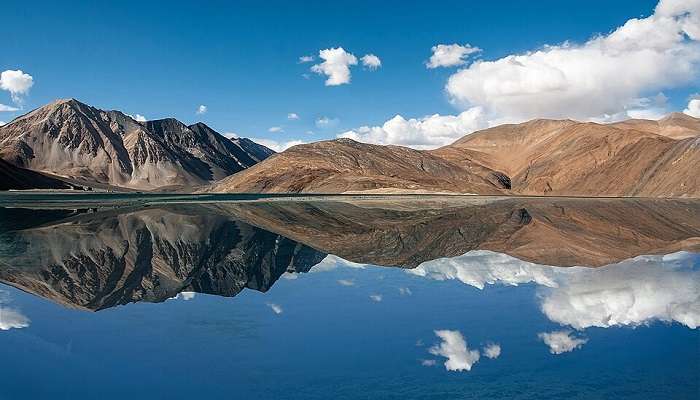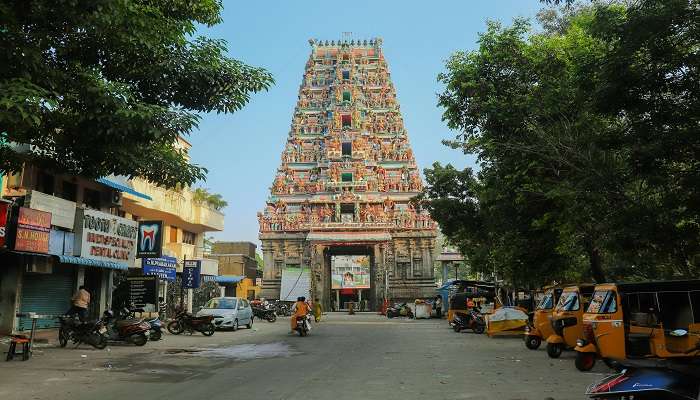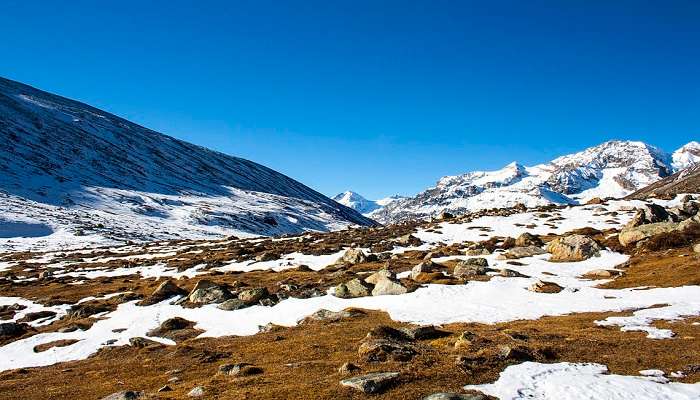Explore Ancient Buddhist Treasure Of Phodong Monastery In 2025
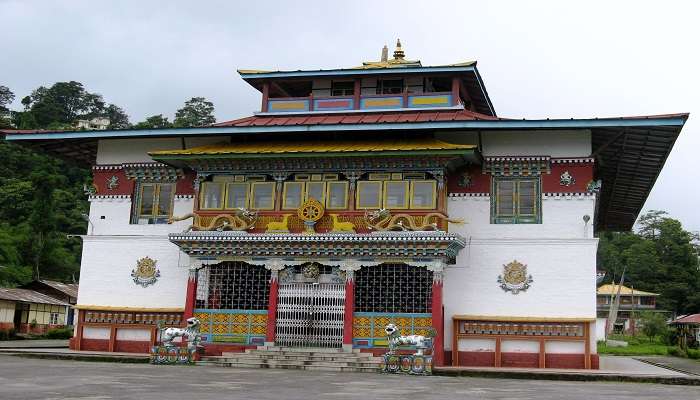
Phodong Monastery, located in Sikkim territory of the great Himalayas, gently invites you to discover the chronicle on time. When you get to this 18th-century heritage site, you will be mesmerised by the sight of prayer flags swaying against the backdrop of the mountain’s snow. Start exploring this spiritual haven, and you will discover intricate frescoes, monk chanting, and much more. Regardless of whether you are interested in history, architecture, or religion or just love exploring places, Phodong Monastery is one of those destinations that will leave you in awe of the wonders of Sikkim.
History Of Phodong Monastery
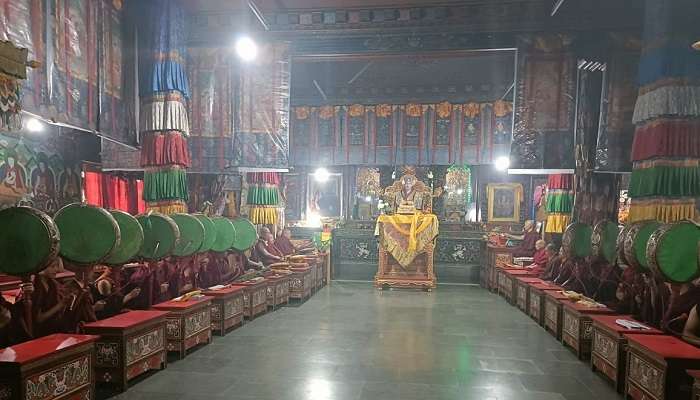
Phodong Monastery, a Karma Kagyu Buddhist monastery in Sikkim, India, was founded in the early 18th century during the reign of Chogyal Gyurmed Namgyal. Situated 28 kms from Gangtok, it is home to 260 monks and frescoes, and the paintings here are centuries old. The 9th Karmapa founded this monastery along with Rumtek and Ralang monasteries.
Sidkeong Tulku Namgyal, who was accepted as the reincarnation of his uncle, rebuilt it. This is just like any other monastery, whereby the design of the place is rather artistic, and the premise comprises statues and religious features. It celebrates the Cham dance festival on the 28th and 29th of October in the Tibetan calendar. Today, tourists and pilgrims visit Phodong, which remains a well-preserved historical site.
Also Read: Offbeat Places In Sikkim
Phodong Monastery Architecture
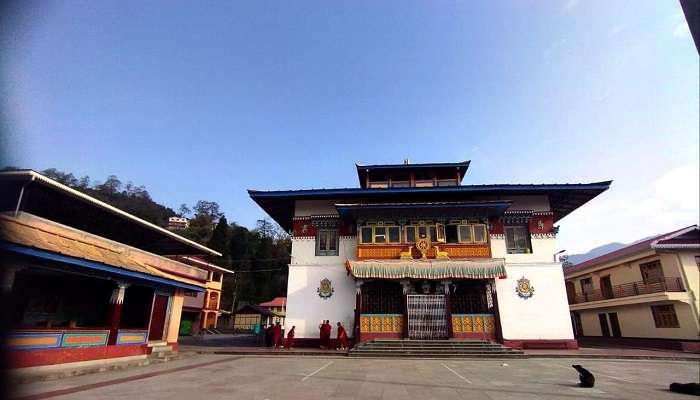
The architectural beauty of Phodong Monastery also reflects the peculiarities of both the Tibetan Buddhist and Sikkimese architecture. The monastery features the Dukhang, the main prayer hall, along with stupas, chortens, and monks’ living quarters. There are receptacles, gateways that are intricately designed, thangka painting, and wooden carvings at the complex. Enticing murals, frescoes, as well as butter lamps are found inside while prayer wheels are found all around the pathways.
Located in a holy site that began its initial stages as a monastic institution, the place has a splendid view of the town and has beautiful gardens and courtyards. There are wooden and stone carvings and a roof having gold finials and prayer flags indicating the local use of material. Ongoing restoration and conservation efforts are dedicated to maintaining the monastery’s structural integrity and preserving its historical and cultural treasures, including valuable manuscripts.
Phodong Monastery Timings & Entrance Fee
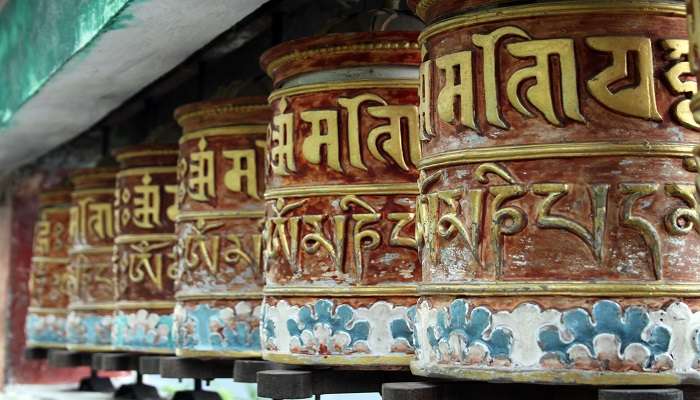
Phodong Monastery Timings for visitors are from 7:00 AM to 5:00 PM, all days of week. It’s a good idea to visit early to experience the serene atmosphere and avoid the larger crowds that can gather later in the day.
There is no official entrance fee for visiting Phodong Monastery. However, donations are welcome to support the monastery’s maintenance and activities. Visitors are encouraged to contribute according to their means.
Related Posts: Paragliding In Sikkim
Festivals At Phodong Monastery
Given below is an overview of the key events, rituals, and traditions that are part of the monastery’s festive calendar. These festivals provide a glimpse into the rich cultural heritage and spiritual practices of the region.
1. Cham Dance Festival
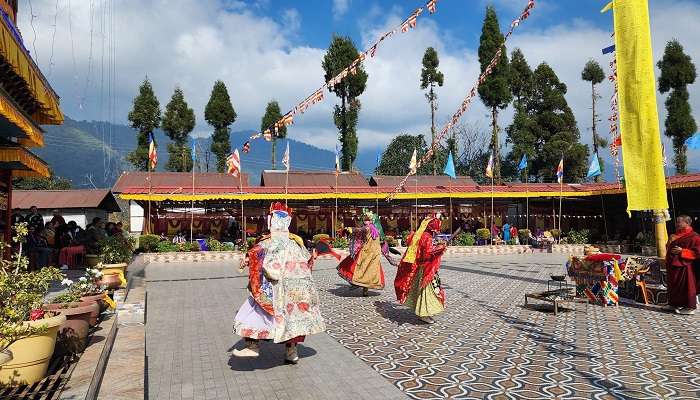
Celebrated every year on the 28th and 29th of October, the Cham Dance Festival is of great importance in the Phodong Monastery. Afterwards, monks put on colourful costumes and put on masks dancing in front of an audience to entertain, embodying deities, demons, and animals. Among them, these performances are performed to drive out evil spirits and attract prosperity. Religious activities such as rites and ceremonies as well as supplications and oblations form part of the festival. The general public together with tourists engage in the activities resulting in a more thrilled communal involvement. All the dances have meanings associated with them in the specific culture, which makes it a rather informative type of performance.
Celebration Month: October
Duration: 2 days (28th and 29th of October)
2. Losar (Tibetan New Year)
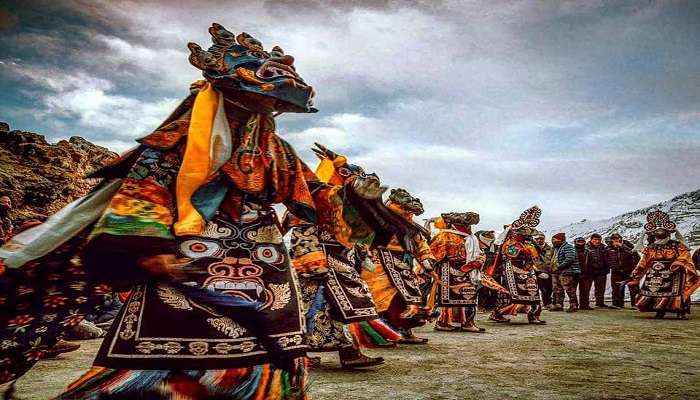
Given before the Losar, the Tibetan New Year, which is typically celebrated every February or March of year. Other religious activities performed by Monks are stills and recitations. People go home for reunion dinners, cook traditional Tibetan food and perform rituals for the gods to have a good year. It contains dance and music of the cultural community in celebration form. This festival is for the unity and rejuvenation of the people by lending support to Tibetan Buddhism. It is famous for being visited by both the local people and tourists to the Monastery.
Celebration Month: February or March
Duration: Varies (typically several days)
Related Posts: Sikkim Wildlife
3. Saga Dawa
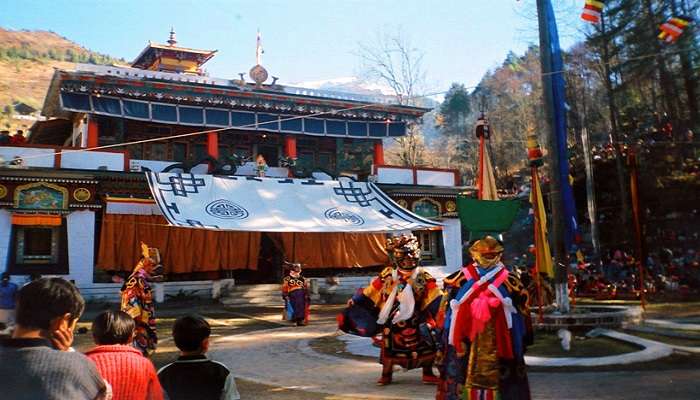
Falling on the full moon of the fourth lunar month, the Saga Dawa festival celebrates the birth, enlightenment, and nirvana of Buddha Shakyamuni. This is a sacred month in which this monastery becomes a centre of pilgrimages. The worshipers chant, bow, and present food, candles and oil lamps, and incense to the image. The monastery performs special pujas and rituals for the birth and life events of Siddhartha Gotama or Buddha. Charity is also performed, where the people offer food and other necessities to monks and beggars acting under the teachings of the religion.
Celebration Month: Fourth lunar month (usually May or June)
Duration: 1 day (falls on the full moon day)
Best Time To Visit Phodong Monastery
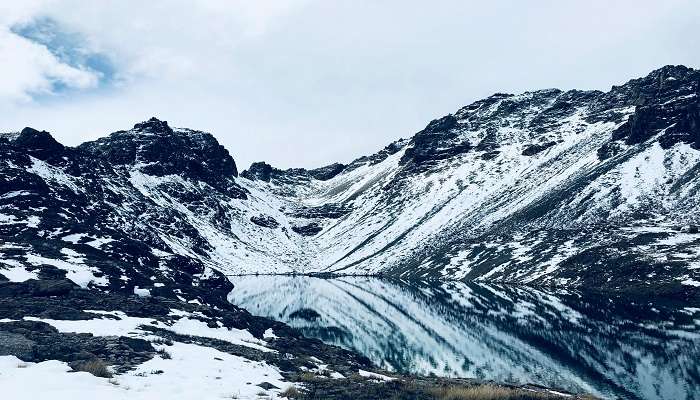
The best times to visit Phodong Monastery are March to May and September to November for the best climate and clear skies, which are suitable for travelling and taking photos. For Cultural tourism, organise your visit during the Cham Dance Festival in December/January or the Losar in February/March.
These festivals give a personal view of what it is to be a Tibetan Buddhist. This is a sensitive season to travel because of the heavy precipitation deposits that may affect accessibility. Every style of the year is unique for this historical place.
Related Posts: Cottages In Gangtok
Major Tourist Attractions Near Phodong Monastery
The attractions near Phodong Monastery blend natural beauty, cultural significance, and historical value. This section provides information on nearby attractions that visitors can explore while visiting the monastery.
1. Kabi Longstok
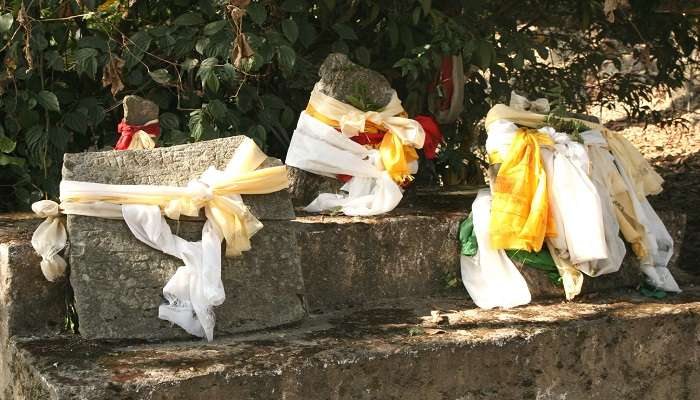
Approximately 16 kilometres from Phodong Monastery, Kabi Longstok is a historically significant site in Sikkim. It is famous for the Kabi Longstok Memorial, commemorating the 17th-century treaty between the Lepchas and the Bhutias, marking a harmonious alliance between the indigenous communities of Sikkim. The site features lush greenery and tranquil surroundings, making it a peaceful spot for reflection. Visitors can explore the stone monuments and inscriptions that highlight the region’s rich cultural heritage. The area also offers scenic views of the surrounding hills and valleys.
Timings: 8:00 AM – 9:00 PM ( closed on Sundays)
Entry Fee: Free
2. Ranka Monastery (Lingdum Monastery)
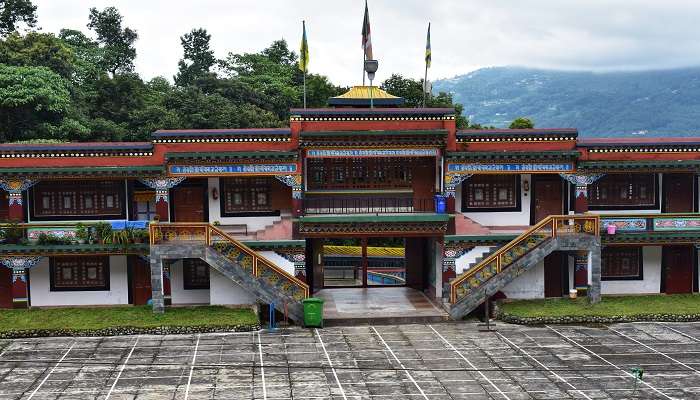
Situated about a few kilometres from Gangtok, Ranka Monastery, also known as Lingdum Monastery, is an example of Sikkim architecture. Though this is a relatively new monastery built in 1998, the artwork and the colours used in the monastery are exquisite. Anchored on the vast green hills, this place is spiritually inclined and ideal for believers and tourists. The monastery has a 35-foot tall statue of Shakyamuni Buddha and beautiful wall paintings of the Buddha’s story that explain the history of Buddhism. Daily prayer ceremonies and well-lit gardens are held for tourists to watch. This place’s environment is very calm, so it is the right place to engage in prayers and reflections.
Timings: 6:00 AM – 6:00 PM
Entry Fee: Free
Related Posts: Honeymoon In Sikkim
3. Nathu La Pass
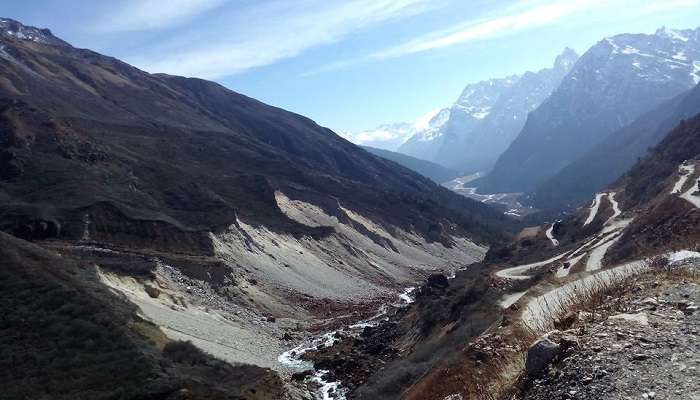
Nathu La Pass is a necessary mountain pass located at 4,571 metres in Sikkim that connects Sikkim to Tibet. It is a part of the great Silk Route, and the physical scenery of this area is magnificent; it contains the high Himalayas. The visitors require special permission to get into this region. The roads from Gangtok to NathuLa cross through Tsomgo Lake and Kupup village, renowned as Elephant Lake, because of its shape. About the pass, there is always fog, which adds a special magic to the place. It is also the only open frontier of the two neighbouring countries, thus serving as one of the few open border posts between India and China.
Timings: Wednesday to Sunday, 8:00 AM – 10:00 AM
Entry Fee: INR 200 per person
You May Also Like To Read: Places To Visit In Sikkim In Summer
While planning your trip to Sikkim, you must make it a point to include Phodong Monastery in your list of places to visit. Spend some time with no words, enjoy the fineness of the calmness, be inspired by the old traditions, and even gather your thoughts in the mountain’s breeze. Let the grace of the monastery and the holiness that pervades bring out the best in you.
For our editorial codes of conduct and copyright disclaimer, please click here.
Cover Image Credit: dhillan chandramowli for Wikimedia Commons
Frequently Asked Questions About Phodong Monastery
What is the appropriate attire when going to Phodong Monastery?
It is advised that the visitors dress appropriately; clothing should be tidy and respect the areas of the sanctuary.
Is it possible to spend a night near Phodong Monastery?
Since there are no available lodging services within the premises of the monastery, visitors may find lodging services in the town of Gangtok.
Is there a provision for a guided tour at Phodong Monastery?
Though there are no professional guides with a specific route while entering the forest area, there are many local people who act as guides charging a nominal fee.
How can one get to Phodong Monastery from Gangtok?
Taxis or jeeps can be hired from Gangtok, and it usually takes an hour to reach the Monastery.
Are cameras permitted within Phodong Monastery?
Taking photographs in the yard of the complex is allowed but it may be better to ask before taking photographs within the expanded hall of prayers.
People Also Read:
Namgyal Monastery Ritigala Forest Monastery Namdroling Monastery

With a passion for exploring and travelling to the roads long forgotten, experience the world through enthralling stories and adventures. Join me as I share my experiences at some of the world’s most popular tourist destinations and quench that pestering curiosity with something exciting!



